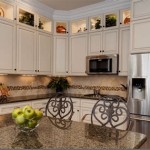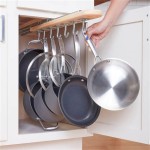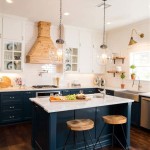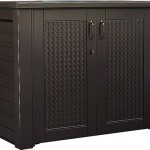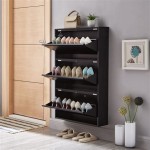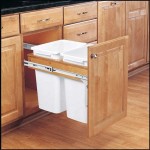```html
Kitchen Dark Floor Dark Cabinets: A Comprehensive Guide
The combination of dark floors and dark cabinets in a kitchen design represents a bold and sophisticated aesthetic choice. This design scheme can create a dramatic and luxurious atmosphere, but it requires careful planning and execution to avoid a space that feels cramped, gloomy, or overwhelming. There are several factors to consider when opting for dark elements in a kitchen, including the overall lighting, counter materials, backsplash options, and the size of the room itself. Understanding these elements is crucial for achieving a balanced and visually appealing kitchen space.
The appeal of dark floors and dark cabinets stems from their ability to create a sense of depth and groundedness. Dark colors tend to recede visually, making a space feel larger than it actually is, paradoxically. The rich tones offer a strong contrast against lighter elements, highlighting textures and architectural details. This design choice can transform a mundane kitchen into a captivating and inviting focal point within the home.
Key Point 1: Lighting is Paramount
Effective lighting is the most critical consideration when designing a kitchen with dark floors and dark cabinets. A poorly lit dark kitchen will appear dismal and uninviting, regardless of how aesthetically pleasing the design choices might be. Natural light is ideal, but in most cases, relying solely on natural light is insufficient.
Adequate artificial lighting should be layered throughout the kitchen. This layered approach incorporates several types of light sources to ensure comprehensive illumination. Ambient lighting is a base layer, providing general illumination to the entire space. Recessed lighting, flush mounts, and strategically placed pendant lights contribute to this layer. Task lighting, focused on specific work areas such as countertops and sinks, is essential for functionality. Under-cabinet lighting is a particularly important element in a kitchen with dark cabinets, as it brightens the work surfaces and mitigates shadows. Accent lighting, which highlights specific features or decorative elements, adds depth and visual interest.
Consider the color temperature of the light bulbs used. Warm white light (2700-3000K) creates a cozy and inviting atmosphere, while cool white light (3500-4100K) provides a brighter and more energetic feel. Selecting the appropriate color temperature depends on the desired mood and the overall aesthetic of the kitchen. Dimmable lighting is also a valuable addition, allowing for adjustable brightness levels to suit different activities and times of day.
Furthermore, reflective surfaces can help to maximize the impact of the lighting. Glossy tiles, metallic accents, and light-colored countertops can bounce light around the room, preventing it from feeling too dark. Mirrors can also be strategically placed to amplify light and create the illusion of more space.
Without sufficient and well-planned lighting, the beauty of dark floors and cabinets can be entirely lost, making the space feel enclosed and unwelcoming. Proper lighting is not just about aesthetics; it is also critical for safety and functionality in a cooking environment.
Key Point 2: Balancing with Countertops and Backsplash
The choice of countertops and backsplash plays a vital role in balancing the darkness of the floors and cabinets. These surfaces provide an opportunity to introduce lighter colors and textures, creating contrast and visual interest. Selecting the right materials and colors is crucial for preventing the kitchen from feeling overly heavy or monotonous.
Lighter countertops are generally recommended for kitchens with dark floors and dark cabinets. White, cream, or light gray countertops provide a striking contrast against the dark cabinetry, brightening the space and highlighting the beauty of both elements. Natural stone materials such as granite, marble, and quartz are popular choices due to their durability, aesthetics, and availability in a wide range of colors and patterns. Engineered quartz is a particularly practical option, as it is non-porous, stain-resistant, and requires minimal maintenance.
The backsplash offers another opportunity to inject lightness and visual texture into the kitchen. A light-colored tile backsplash, such as white subway tile or a mosaic with subtle variations in color, can effectively break up the darkness of the cabinets and create a focal point. Glass tiles are also a good option, as they reflect light and add a sense of depth. Consider the size and shape of the tiles, as these factors can significantly impact the overall aesthetic. Larger tiles can create a more seamless and modern look, while smaller tiles can add a more intricate and textured feel.
Beyond color, the texture of the countertops and backsplash can also contribute to the overall balance of the kitchen. Textured countertops, such as honed granite or concrete, can add a tactile element that complements the smooth surfaces of the cabinets. Similarly, textured backsplashes, such as brick or stacked stone, can create visual interest and depth. The key is to choose textures that complement the overall style of the kitchen and avoid overwhelming the space.
Ultimately, the goal is to create a harmonious balance between the dark floors and cabinets and the lighter countertops and backsplash. This balance prevents the kitchen from feeling too heavy or bland and ensures a visually appealing and inviting space.
Key Point 3: Incorporating Light Accents and Materials
Beyond countertops and backsplashes, incorporating light accents and materials represents another strategy for counteracting the darkness of the floor and cabinets. These accents can be introduced through various design elements, including hardware, appliances, decorative items, and even the choice of window treatments. Careful consideration of these details can significantly enhance the overall brightness and visual appeal of the kitchen.
Hardware, such as cabinet pulls and knobs, presents an opportunity to introduce contrasting colors and textures. Choosing light-colored hardware, such as brushed nickel, chrome, or even gold, can add a touch of elegance and break up the darkness of the cabinetry. The style of the hardware should complement the overall aesthetic of the kitchen, whether it is modern, traditional, or transitional. The size and shape of the hardware should also be proportional to the size of the cabinets and drawers.
Appliances can also contribute to the overall lightness of the kitchen. Stainless steel appliances are a popular choice, as they reflect light and add a modern touch. However, lighter-colored appliances, such as white or cream, can also be effective in brightening the space. Consider integrating appliances into the cabinetry to create a seamless and streamlined look. This can be achieved by using custom-built panels that match the cabinet color or by choosing appliances with a minimalist design.
Decorative items, such as plants, artwork, and accessories, can add pops of color and visual interest to the kitchen. Potted plants can bring a touch of nature indoors and brighten the space with their vibrant greenery. Artwork, such as paintings or prints, can add personality and character to the kitchen. Accessories, such as vases, bowls, and canisters, can be used to introduce pops of color and texture. The key is to choose decorative items that complement the overall style of the kitchen and avoid cluttering the space.
Window treatments can also play a significant role in controlling the amount of natural light that enters the kitchen. Light and airy curtains or blinds can allow natural light to filter into the space, while darker or heavier window treatments can block out light and contribute to the overall darkness. Consider using sheer curtains or blinds to maximize the amount of natural light while still providing privacy. Alternatively, Roman shades or valances can add a touch of elegance and style to the kitchen.
By strategically incorporating light accents and materials, the darkness of the floor and cabinets can be balanced effectively, creating a kitchen that is both stylish and inviting. These details demonstrate that careful planning and attention to detail are essential for achieving a successful dark-on-dark kitchen design.
```
Can I Have Light Kitchen Cabinets With Dark Floors

White Kitchen With Dark Floors And Black Countertops

What Color Kitchen Cabinets Go With Dark Wood Floors

Neat Kitchen Color Schemes With Dark Floors

Can I Have Light Kitchen Cabinets With Dark Floors

Henry Kitchen With Dark Tile

What Color Cabinets Go Best With Dark Brown Hardwood Floors

White Kitchen Cabinets Dark Wood Floors Transitional

10 Beautiful Kitchens With Dark Hardwood Floors

Light Kitchen Cabinets With Dark Wood Floors Design Ideas
See Also


